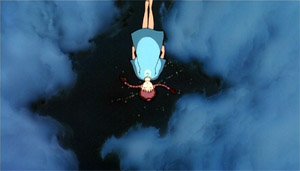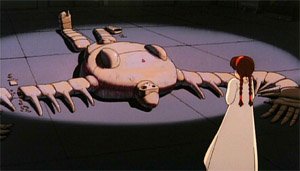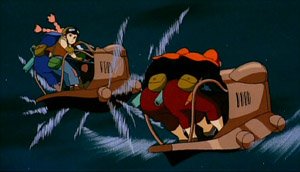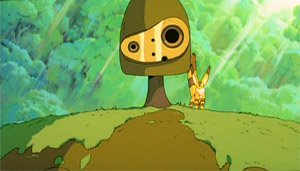 |  |
 |  |
The name Laputa comes from the name of the floating castle in the sky in Jonathan Swift's classic novel Gulliver's Travels. Miyazaki apparently liked the name and the idea so he borrowed both. However, Swift, being a satirist, had used the Spanish slang word for "whore" ( "la puta" ) as the name of the original castle in the sky. (The people in Swift's Laputa were absent-minded technologists who oppressed the lands below them by cutting off the sunlight to them. In that sense Swift's choice of the name does not make any sense, and I have not been able to find anything which explains why he chose that particular name.)
It is not clear whether Miyazaki understood the origin of this word or not when he chose it. However, Isao Takahata, Miyazaki's mentor and the producer of Laputa, did know and said so in an interview in Animeland #6 July/August 1992. Apparently neither of them realized how obscene the word is in contemporary Spanish.
Ironically, Miyazaki almost avoided the problem altogether. Since there is no "L" in Japanese, they pronouce the name as "rap-uh-ta". The picture above shows an early production sketch (taken from The Art of Laputa) of the opening credits where they have respelled it as Raputa. But for whatever reason, they decided to stick with the original.
Because of all this, the English language version of Laputa released by Disney is titled Castle in the Sky which is a shortened version of its full Japanese title: Castle in the Sky: Laputa. There are just too many bilingual folks in the US for them to risk the hassle of angry parents wanting to know what this movie is doing in the children's video section.


Comentários
Furthermore, the dubbed version refers to the island
as Laputa in a very fast and with a elusive entonation,
me recalls...